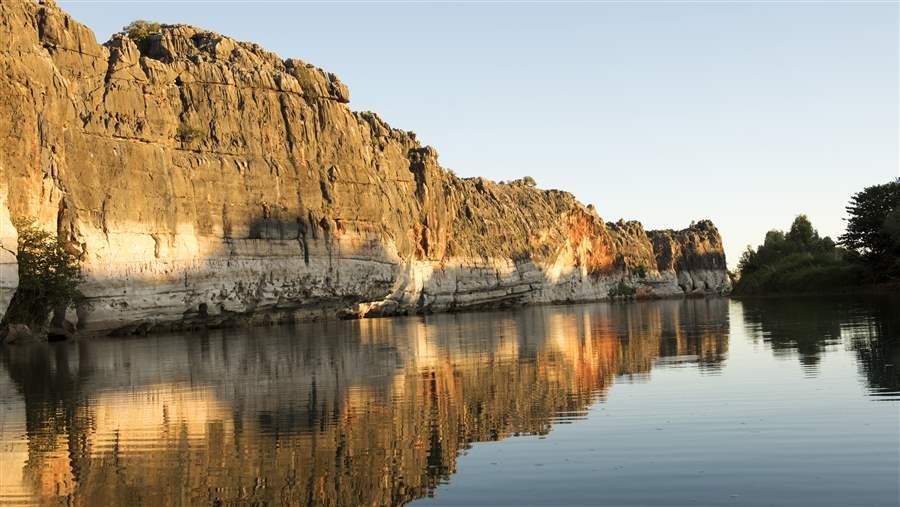In Australia's Kimberley Region, Natural and Cultural Riches Merit Protection
More than 100 scientists call for strong conservation of the Fitzroy River basin

The Darngku (Geikie Gorge) National Park is the only part of the Fitzroy River that is protected; scientists say safeguards must be extended to cover the entire river.
John Carnemolla/iStockphoto
In March, more than 100 scientists from across Australia urged the Western Australian government to create a national park and a catchment management plan to protect the Fitzroy River. By signing the Fitzroy River Science Statement, these experts hope to provide the government with scientific guidance on the values of the river and its basin, and the threats confronting them.
The Fitzroy River is one of the largest free-flowing rivers in the world and is a centre of cultural life and biodiversity in the Kimberley—the northernmost region of Western Australia. The Fitzroy flows through some of the most spectacular and ancient parts of this region, and supports a rich and unique array of aquatic and terrestrial life—qualities that have earned the river a national heritage listing.
But the river and its basin are threatened by new proposals for intensive farming involving large-scale land clearing and water extraction, as well as mining and dams. Invasive plants like Noogoora burr, parkinsonia, and rubber vine endanger riparian and flood-plain areas, and feral animals such as camels, donkeys, wild boars, and cane toads jeopardize the health of native species.
The Fitzroy region, which covers 156,000 square kilometres (about 60,200 square miles), has been important to Indigenous people for millennia and is home to some of Australia’s oldest and most detailed evidence of Aboriginal occupation. Rock shelves like Carpenter's Gap and Riwi are some of the continent’s oldest sites with fossils of plants, terrestrial and aquatic fauna, and such artefacts as Australia’s oldest-known ground-edge axe and shell ornaments. The widespread rock art of the region—including paintings, engravings, and stone arrangements—is actively maintained by Traditional Owners and Indigenous Rangers.
This river and its estuaries also provide habitat for species such as the bull shark and the critically endangered freshwater sawfish, whose numbers have declined by almost 70 per cent globally, making intact nurseries such as the Fitzroy crucial for its survival.
The lands and waterholes flanking the river are equally important for at least 40 species of plants, which support riparian bird species such as the nationally endangered purple-crowned fairy-wren. The wetlands and billabongs at the river mouth and along the flood plain are habitat for internationally protected migratory (and non-migratory) birds such as magpie geese and whistling duck.
Fortunately, scientific research in the region has shown that the Western Australian government, working with Indigenous communities, can protect the remarkable natural and cultural values of the Fitzroy River region by:
- Creating a protected area in the river’s upper reaches to eliminate the threat of dams.
- Reducing the impacts of landscape-scale threats such as bushfires, weeds, and overgrazing, which affect water quality.
- Adopting a management plan that includes a buffer zone along the river that protects seasonal wetlands, the alluvial aquifers, and other groundwater conduits that feed refuge pools in the dry season, and the flood plains from which the aquifers recharge. The buffer zone must prohibit native vegetation clearing, hydraulic fracturing, mining, and large water-extraction projects.
With relatively intact ecosystems that support so many species and communities, the Fitzroy River catchment is worthy of protection through a national park and catchment management plan. By adopting a sound, science-based plan, the government could establish this basin as an internationally acclaimed conservation region, adding another gem to Australia’s crown of world-class protected areas.
Scientists are encouraged to add their support to the Fitzroy River Science Statement. To do so, email [email protected].
Barry Traill directs The Pew Charitable Trusts’ Outback to oceans program in Australia, and Tim Nicol manages Pew’s work in the Kimberley region.






